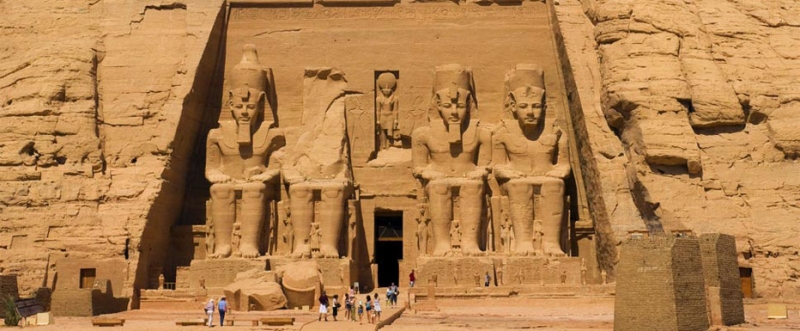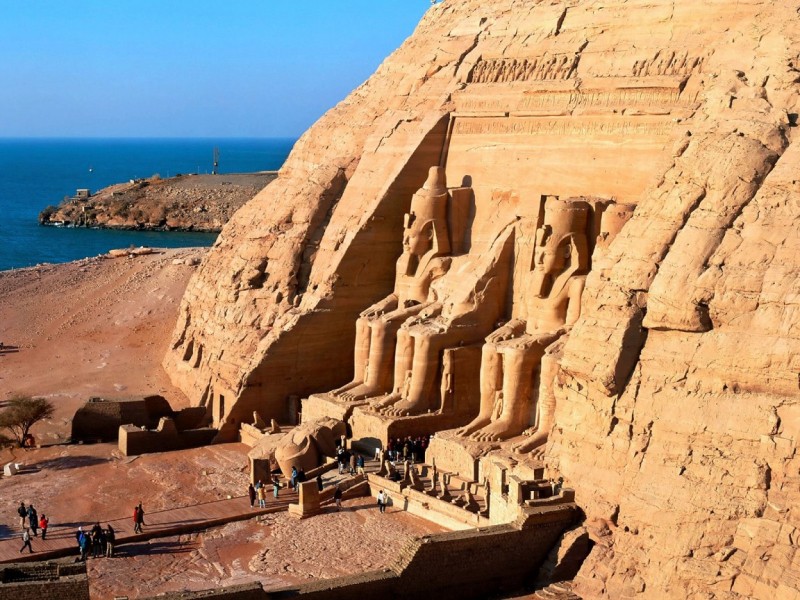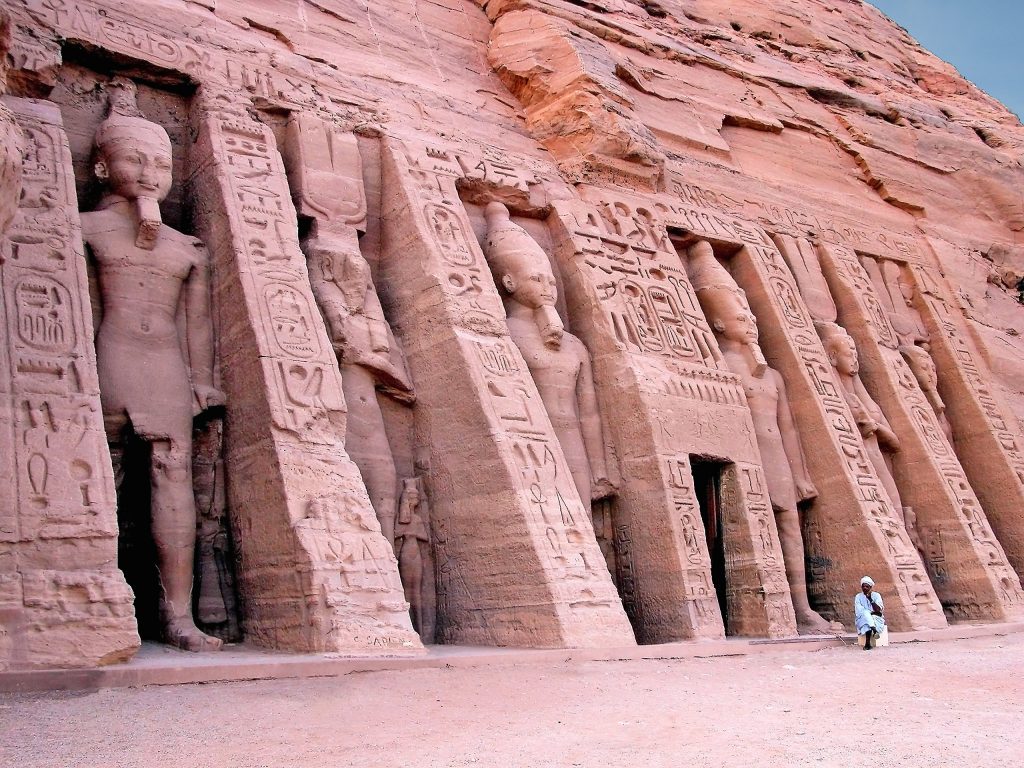Abu simbel Egypt
Abu simbel Egypt In 1257 BCE, Pharaoh Ramses II (1279-13 BCE) had two temples carved out of solid rock at a site on the west bank of the Nile south of Aswan in the land of Nubia and known today as Abu Simbel. Long before Ramses II, the site had been sacred to Hathor of Absek.
The temple built by Ramses,
however, was dedicated to the sun gods Amon-Re and Re-Horakhte. Because of their remote location near the Sudanese border in sourthern Egypt, the temples were unknown until their rediscovery in 1813.

They were first explored in 1817 by the Egyptologist Giovanni Battista Belzoni.
The sacred area, marked out as a forecourt and bounded on the north and south sides by brick walls, occupied a place between the sandstone cliffs and the river.
Ramses’ temple was cut into the face of the cliff, before which is a rock-cut terrace.
The temple is approached across this terrace up a flight of steps with an inclined plane in the middle, and enclosed on either side by a balustrade behind which stood a row of hawks and statues of Ramses in various forms.
The rock-cut fa açade of Ramses’ temple represents the front of a pylon in front of which are four colossal seated figures of Ramses.
This facade is one 119 feet wide, and 100 feet high, while the colossal statues are 67 feet in height. At the top of the pylon, above the cornice, is a row of baboons, who, as Watchers of the Dawn, are shown with their hands raised in adoration of the (rising) sun.
The Egyptians believed baboons played a role in helping the sun god Ra defeat the darkness of night and so were believed sacred to the worship of the rising sun.
The Main Hall, Abu Simbel
The actual interior of the temple is inside the cliff in the form of a man-made cave cut out of the living rock (cf. The Sacred Cave).
It consists of a series of halls and rooms extending back a total of 185 feet from the entrance. The long first hall is 54 feet wide and 58 feet deep and has two rows of Osirid statues of Ramses each 30 feet high.

Those on the north side are shown wearing the White Crown of Upper Egypt, while those on the south wear wearing the Double Crown of Lower Egypt.
At the west end of the main hall are three doors, the side ones leading into lateral chambers, and the central one opening into a room with four square pillars.
From this room a doorway leads to the vestibule, and beyond that is located the innermost shrine with seated statues of the gods Ptah, Amun-Ra, the deified Ramses II, and Re-Horakhte.
The Innermost Shrine, Abu Simbel
The most remarkable feature of the site is that the temple is precisely oriented so that twice every year, on 22 February and 22 October, the first rays of the morning sun shine down the entire length of the temple-cave to illuminate the back wall of the innermost shrine and the statues of the four gods seated there.
Precisely this same effect was apparently also fundamental to the design of the artificial cave of Newgrange in Ireland.
With the construction of the Aswan High Dam in the 1960s, the temples were threatened with submersion under the rising waters of the reservoir (Lake Nassar).
Between 1964 and 1966, a project sponsored by the United Nations Educational, Scientific and Cultural Organization (UNESCO) and the Egyptian government disassembled both temples and reconstructed them on top of the cliff 200 feet above.


